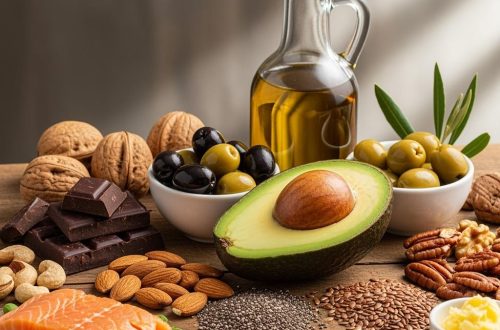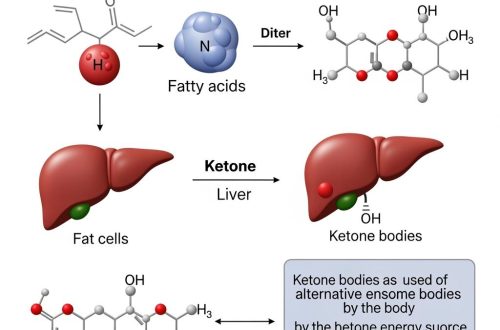Advanced Strategies for Ketogenic Success
The ketogenic diet has exploded in popularity, with millions of people adopting this low-carb, high-fat lifestyle. While most dieters are familiar with the basics—drastically reducing carbohydrates, increasing healthy fats, and monitoring ketone levels—there’s a treasure trove of lesser-known strategies that can supercharge your keto journey. These uncommon keto hacks go beyond the standard advice, offering innovative approaches to optimize ketosis, enhance fat adaptation, and overcome common plateaus.
The Ice Bath Connection: Cold Thermogenesis for Enhanced Fat Burning
One of the most overlooked keto accelerators is deliberate cold exposure. Cold thermogenesis activates brown adipose tissue, a special type of fat that burns calories to generate heat. When combined with ketosis, this creates a powerful synergy for fat oxidation. Consider taking ice baths for 10-15 minutes or finishing your shower with 2-3 minutes of cold water. The metabolic stress from cold exposure can also improve insulin sensitivity and potentially deepen ketosis. Start gradually with cool water and progressively decrease the temperature as your tolerance builds.
Beyond ice baths, sleeping in a cooler environment around 65-68°F can enhance overnight fat burning. Your body works harder to maintain core temperature in cooler conditions, potentially increasing the metabolic benefits of your fasting state during sleep.
Strategic Protein Cycling: The Forgotten Macronutrient Manipulation
Most keto practitioners focus intensely on carbs and fats while treating protein as a constant. However, strategic protein cycling can be a game-changer. Consider implementing higher protein days once or twice weekly, particularly around intense training sessions. This approach, sometimes called “protein pulsing,” can help preserve muscle mass while potentially triggering beneficial hormonal responses.
On higher protein days, aim for 1.2-1.6 grams per kilogram of body weight, then return to your standard moderate protein intake of 0.8-1.0 grams per kilogram. This cycling can help prevent the metabolic adaptation that sometimes occurs with prolonged caloric restriction and may actually enhance ketone production on your return to lower protein intake.
The Mineral Maximization Protocol
Electrolyte balance extends far beyond the typical sodium, potassium, and magnesium trio that most keto resources mention. Implementing a comprehensive mineral protocol can dramatically improve your keto experience and performance. Focus on often-overlooked minerals like zinc, which supports thyroid function and testosterone production, both crucial for maintaining metabolic rate during ketosis.
Consider adding trace minerals through high-quality sea salt, bone broth made from grass-fed bones, and targeted supplementation. Chromium, in particular, can enhance insulin sensitivity and glucose metabolism, making the transition into ketosis smoother. Aim for 200-400 micrograms daily, preferably from chromium picolinate for better absorption.
Circadian Rhythm Optimization for Metabolic Flexibility
Your body’s internal clock profoundly influences metabolic processes, including ketone production and fat oxidation. Aligning your eating patterns with your circadian rhythms can amplify keto benefits. Try confining your eating window to daylight hours, typically between 8 AM and 6 PM, which supports natural cortisol and insulin patterns.
Light exposure plays a crucial role too. Getting bright light exposure within the first hour of waking helps set your circadian clock, while avoiding blue light 2-3 hours before bed supports melatonin production and overnight fat burning. Consider using red light therapy devices in the evening, which may support mitochondrial function without disrupting sleep patterns.
The Ketone Ester Edge: Next-Level Exogenous Ketones
While most people are familiar with ketone salts and MCT oil, ketone esters represent the cutting edge of exogenous ketone supplementation. These compounds can rapidly elevate blood ketone levels to therapeutic ranges, potentially accelerating the benefits of nutritional ketosis. Ketone esters may be particularly valuable during the initial adaptation phase or when breaking extended fasts.
Unlike ketone salts, which can cause digestive distress due to their mineral content, ketone esters provide pure beta-hydroxybutyrate without additional compounds. Start with small doses of 5-10 grams and monitor your response, as they can be quite potent and expensive.
Vinegar Timing: The Glucose Disposal Agent
Apple cider vinegar has gained popularity in keto circles, but the timing of consumption makes a significant difference. Rather than drinking it randomly throughout the day, strategic timing can maximize its glucose disposal effects. Consume 1-2 tablespoons of apple cider vinegar 15-20 minutes before your largest meal to improve insulin sensitivity and potentially blunt any glucose response from trace carbohydrates.
For an advanced approach, try combining apple cider vinegar with a small amount of lemon juice and a pinch of Ceylon cinnamon. This combination may further enhance glucose metabolism and provide additional polyphenols that support metabolic health.
The Breathing Protocol: Leveraging Carbon Dioxide for Fat Loss
Controlled breathing exercises can influence your metabolic state in surprising ways. Box breathing—inhaling for 4 counts, holding for 4, exhaling for 4, and holding empty for 4—can shift your nervous system toward the parasympathetic state, which favors fat oxidation over glucose burning.
Additionally, the Wim Hof breathing method, which involves controlled hyperventilation followed by breath retention, may temporarily increase metabolic rate and stress resilience. Practice this technique on an empty stomach, preferably in the morning, to potentially enhance the transition into deeper ketosis.

Targeted Micronutrient Timing
The absorption and utilization of certain nutrients can be optimized through strategic timing relative to your ketotic state. Fat-soluble vitamins A, D, E, and K should be consumed with your highest-fat meal to maximize absorption. Conversely, water-soluble B vitamins and vitamin C are best taken on an empty stomach for optimal uptake.
Consider taking magnesium glycinate before bed, as it supports both sleep quality and overnight fat burning. Zinc, on the other hand, is best absorbed on an empty stomach but may cause nausea, so experiment with timing to find what works for your system.
The Metabolic Flexibility Reset
One of the most advanced keto strategies involves deliberately cycling between different metabolic states to enhance flexibility. This might include occasional 24-48 hour fasts followed by targeted carbohydrate refeeds, or alternating between strict ketosis and periods of higher protein intake.
This approach, sometimes called “keto cycling,” can prevent metabolic adaptation and may actually enhance your body’s ability to efficiently switch between fuel sources. However, this strategy is best reserved for experienced keto practitioners who have already achieved solid fat adaptation.
Advanced Meal Timing Strategies
Beyond simple intermittent fasting, consider implementing eating patterns that align with your individual chronotype and activity levels. If you’re naturally a morning person, try having your largest meal earlier in the day when insulin sensitivity is typically highest. Night owls might benefit from a later eating window that aligns with their natural energy patterns.
Additionally, timing your carbohydrate intake—however minimal—around periods of high activity or stress can help optimize glucose disposal while maintaining ketosis. Even 5-10 grams of targeted carbohydrates before intense exercise can enhance performance without significantly disrupting ketosis in well-adapted individuals.
The Integration Advantage
The most successful keto practitioners don’t rely on single hacks but rather integrate multiple strategies into a cohesive lifestyle approach. Start by implementing one or two of these uncommon strategies, monitor your response through ketone testing and subjective energy levels, then gradually add additional elements as they prove beneficial for your individual physiology.
Remember that the ketogenic diet is ultimately a tool for optimizing metabolic health, and these advanced strategies can help you extract maximum benefit from your commitment to this powerful nutritional approach. The key is consistency, patience, and willingness to experiment with what works best for your unique situation and goals.





